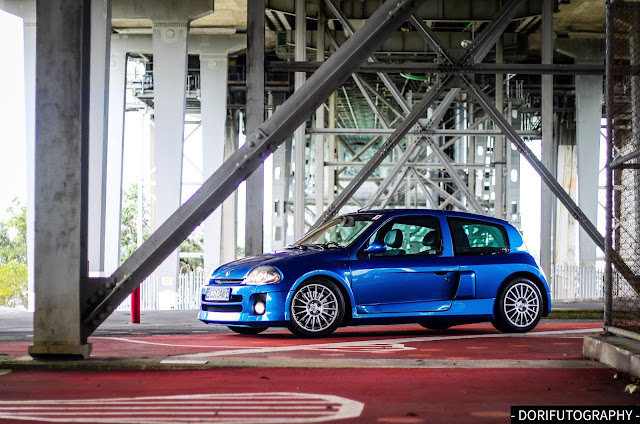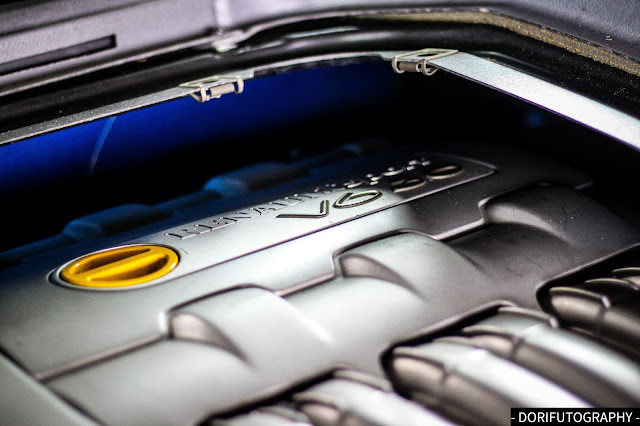How to make a car cool? Grab a standard economy car and chuck a crazy engine, an oddball bodykit and sell it to the masses. That’s the French, and that’s what makes them have such a large cult following. The story with the car I’m writing about today is no different.
To most people, this Renault resembles just a normal Clio II, but to you and me, this is a masterpiece of a car! But before we get into it, we can’t miss the reason why it was created. You see, Renault loves their one-model race series. In my Sport Spider article, I did mention the Sport Spider Trophy race series. Now, the successor to that race series was the Clio V6 Trophy series, in which the prototype to this road going Clio V6 was used. But despite its name, barely anything was shared between the standard road car and this version.
The exterior of the vehicle had very unique styling, looking like someone had just molded wider guards on both the front and rear fenders. The wider stance made the car more stable in the bends. The vents on either side were the intakes for the engine, which was now mounted in the middle.
Out were the sub-2.0L In-line 4 engines, and in was a mid-mounted 3.0 V6. This particular engine is also present in all luxury/executive Citroens, Peugeots and Renaults. It was also in the Venturi 300 Atlantique, but with added turbos. Aside from those cars, the engine didn’t have much involvement in motorsport, apart from the aforementioned Clio V6 Trophy, but also the Courage C52/C60 Le Mans race cars in which they had twin turbos and a larger displacement at 3.2L.
Having the engine placed just in front of the rear axle, it meant that the layout had to be changed from ‘Front Engine-Front Wheel Drive’ to ‘Rear-Mid Engine-Rear Wheel Drive’. It was also only made with a 6-speed manual gearbox, which was now in front of the engine, instead of behind it. The V6 was also in the place of the rear bench, and nothing was in the front, and there was no partition between the cockpit and the engine bay, which meant the driver would feel and hear the raw engine sound, creating a very different and unique driving experience.
With all of these additions, the Phase I, at 1,355kg, was unsurprisingly 300kg heavier than the sportiest ‘normal’ Clio II, the 172 Cup. This was due to the extensive structural work on the body and chassis of the car because of the radical change in engine and transmission placement. Even though it was that much heavier, the 3.0 V6 made up for it in horsepower, pushing 227hp, whereas the 172 Cup had 167hp. This made it the 2nd highest horsepower hatchback in 2001, just losing out to the Saab 9-3 at 230hp. The Clio V6 had a 0-100 km/h at 6.2 seconds, 0.5 seconds quicker than the 172 Cup. Nonetheless, the 172 Cup won in the top speed segment, topping out at 235 km/h, beating the V6 at 222 km/h.
Practical usage was not the main focus of this little car, with a very thin boot space behind the engine, which is mostly taken up with the car’s toolbox; a very thin parcel shelf with netting behind the seats; and a small space up in front where the engine used to be. And because of the size of the engine coupled with the transmission, the fuel economy was ridiculously high for a hatchback at 12 L/100 km. And, with the modified steering, the turning circle was a terrible 13 meters, making a usual 3-point turn into a horrible 5-point turn.
In total, only 1,513 of the Phase I V6 were made, this particular one being No.258. With it being painted in Illiad Blue, which was the rarest colour, this makes the car 1 of 30 ever made. This Clio V6 was also a UK import, meaning that it’s actually even rarer, since only 8 were ever specced for the United Kingdom!
Although today's article is solely focused on the Phase I V6, the Phase II V6 was made with the same intention as the first one, with a wider body on a post-facelift Clio II and an even higher horsepower, which made it the highest horsepower hatchback when it came out in 2003 (@ 252 hp)! The Phase II was made in fewer amounts too, at 1,309 cars, but there were a lot more colours than the first rendition, 12 compared to 3.
Colour Time:
Reds: Mars Red (68 were made)
Blues: Illiad Blue (30 were made)
Silvers: Iceberg Silver (1,415 were made)
With such an interesting car, which differed to everything before it, during it’s time and even to now, this car truly leaves an impression of awesomeness on me. And, I think we’re all wanting Renault to release something like this again with the new shape Clio RS, or even Megane RS; something that’ll take on whatever Hyundai is releasing soon!









No comments:
Post a Comment